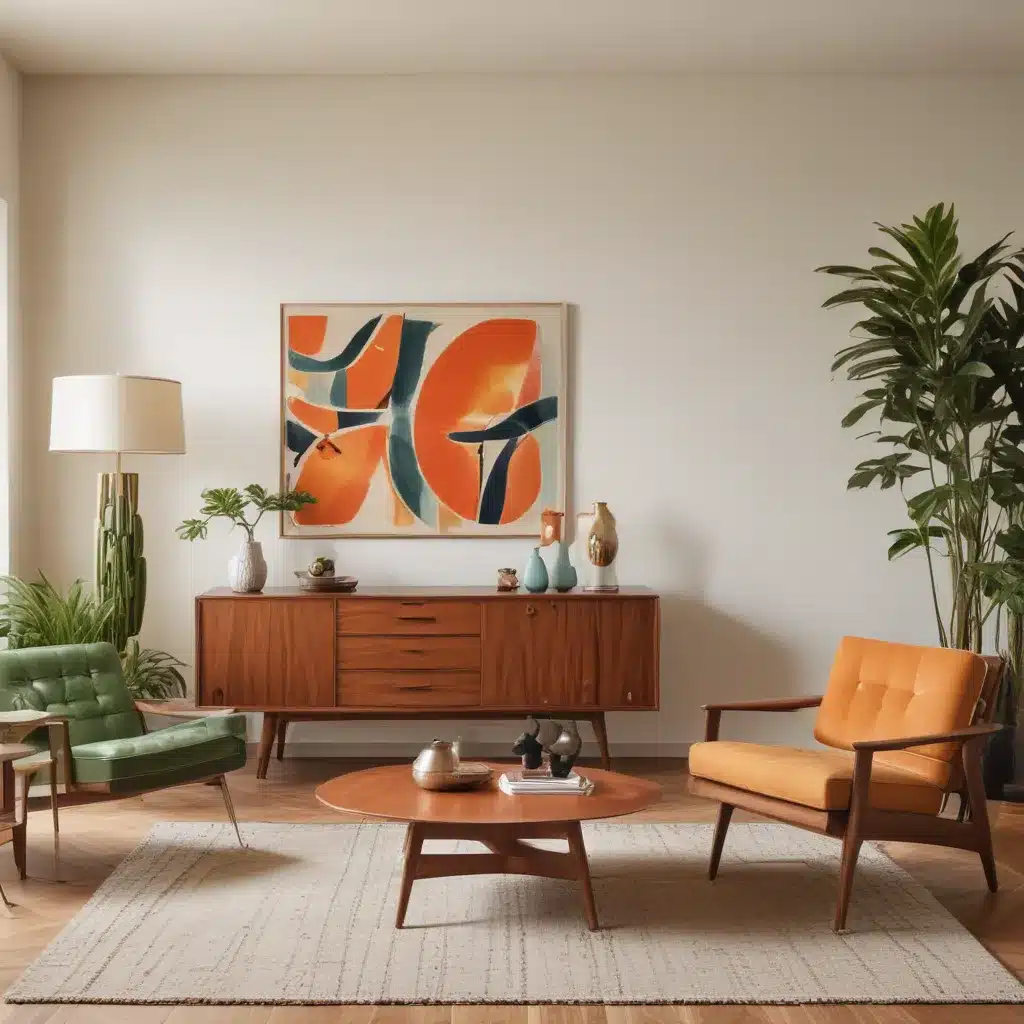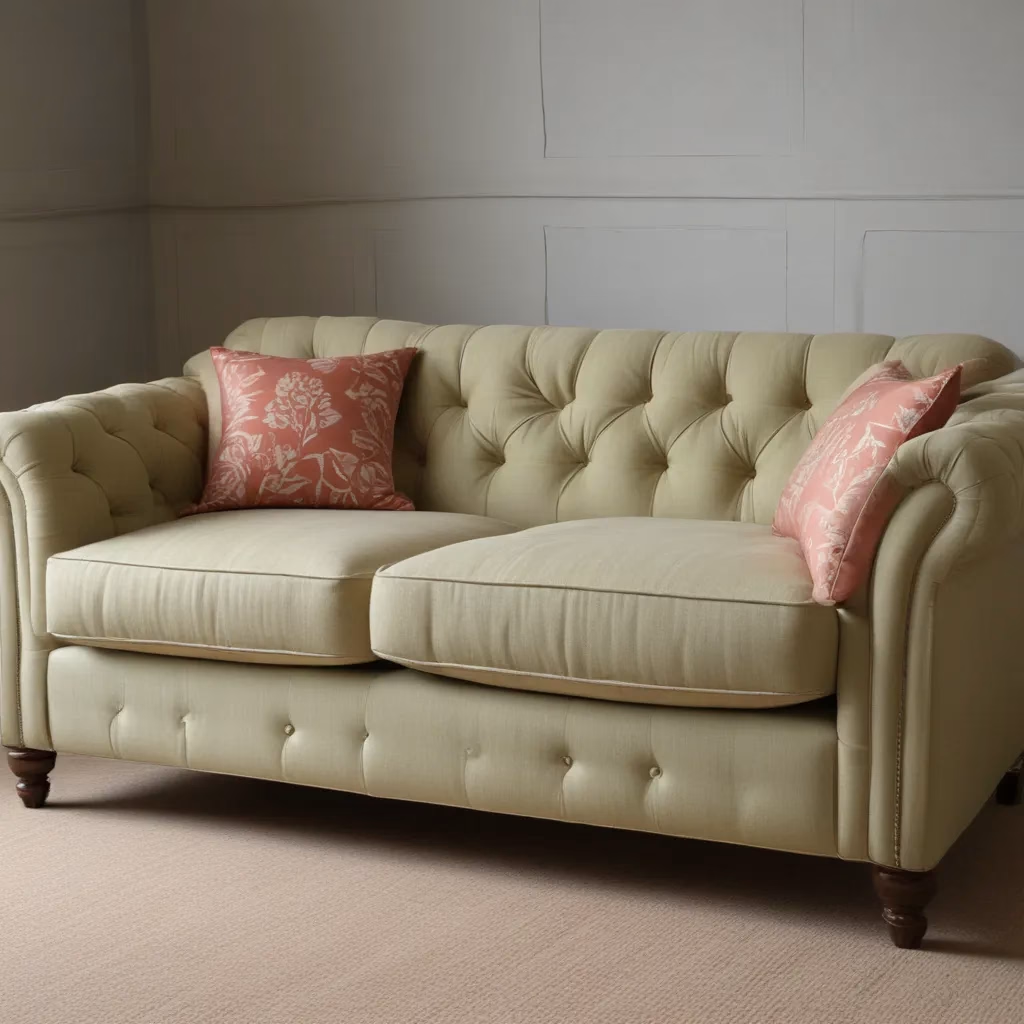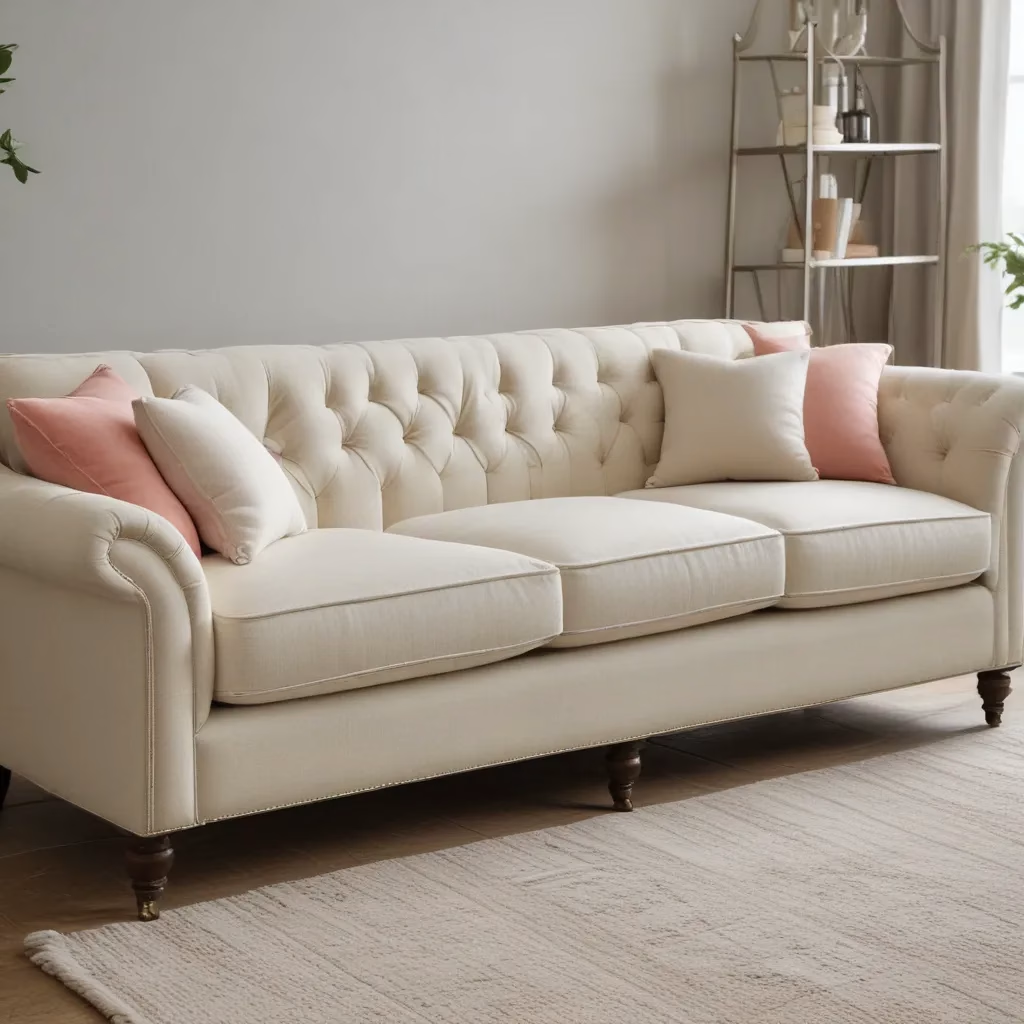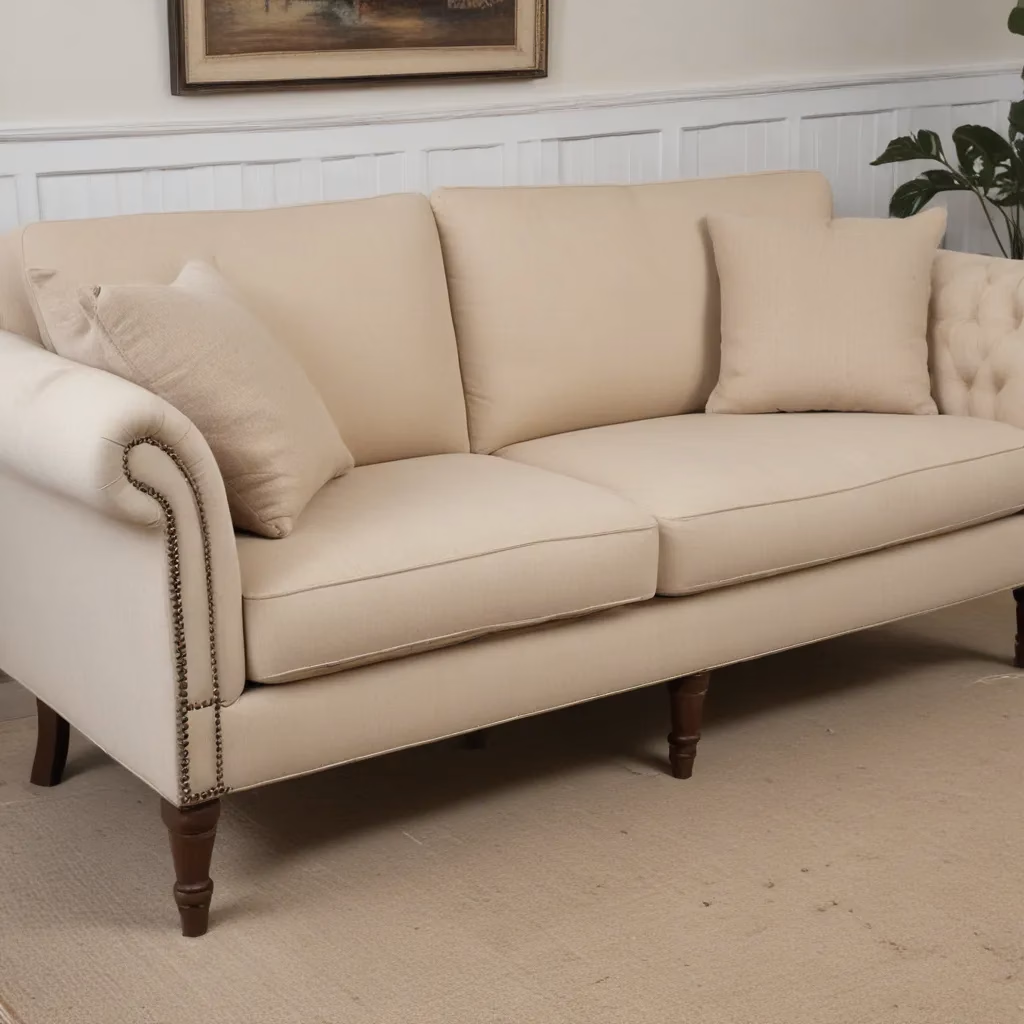The Enduring Allure of Timeless Design
I’ll admit, when I first heard the term “mid-century modern,” I pictured something straight out of a 1950s sitcom – all clean lines, neutral colors, and furniture that looked like it was built to last a lifetime (and then some). But as I delved deeper into this iconic design style, I realized there was so much more to it than just nostalgia.
What started as a post-war reaction to the ornate, overstuffed styles of the past has evolved into a design movement that continues to captivate homeowners and interior designers alike. From the sleek silhouettes of Sofa Spectacular’s custom sofas to the quirky, geometric lighting fixtures that have become synonymous with the era, mid-century modern has proven itself to be anything but a relic of the past.
The Rise and Resilience of Mid-Century Modern
As I learned from my research on Webber Studio’s website, this design style emerged in the 1930s through the 1960s, a period of immense social and cultural change. With the end of World War II, families were eager for a fresh start, trading the busy, ornate styles of the past for simpler, more functional pieces that reflected the changing needs of the modern home.
Open floor plans, natural materials, and a focus on indoor-outdoor living became the hallmarks of mid-century modern design. And as new technologies like televisions and transistor radios reshaped daily life, designers responded with pieces that were not only visually striking, but also built to withstand the demands of the 21st-century household.
The Comeback Kid
It’s interesting to note that the story of mid-century modern design is one of cyclical revival. As Webber Studio points out, design trends tend to be the polar opposite of the one before them. So after the “anything goes” aesthetic of the 1990s and 2000s, it’s no surprise that homeowners have once again embraced the clean lines, neutral palettes, and timeless appeal of mid-century modern.
But it’s not just nostalgia driving this resurgence. As we’ve entered an era of increased focus on sustainability, natural materials, and functional design, mid-century modern pieces have found a new relevance. These are furnishings built to last, crafted with care and attention to detail – a far cry from the disposable culture that has dominated in recent decades.
Navigating the Mid-Century Modern Landscape
Of course, as with any design trend, there are challenges and criticisms that come with the mid-century modern resurgence. As Webber Studio points out, the mass production of these once-iconic pieces has diluted their value and made it harder for buyers to distinguish between authentic vintage finds and modern reproductions.
And then there’s the issue of sustainability – many of the materials used in classic mid-century modern design, from plastics to synthetic fabrics, aren’t exactly eco-friendly by today’s standards. But as designers and manufacturers continue to adapt these timeless designs to modern, responsible materials, these challenges are being addressed head-on.
Embracing the Retro Revival
Despite these hurdles, the allure of mid-century modern design remains strong. And with good reason – as I’ve discovered, this style has a way of seamlessly integrating into any home, regardless of its architectural style or era. Whether you’re drawn to the sleek silhouettes of Sofa Spectacular’s custom sofas or the quirky charm of a vintage Saarinen dining table, there’s something about mid-century modern that just feels…right.
Perhaps it’s the way these pieces strike a perfect balance between form and function, or the sense of nostalgia they evoke without feeling dated. Or maybe it’s the fact that, in a world that’s constantly changing, there’s something comforting about the enduring appeal of timeless design.
Bringing Mid-Century Modern Home
So, where does one begin when it comes to incorporating this iconic style into their living space? Well, Webber Studio has some great tips. Start by embracing the open floor plan, using creative lighting and color palettes to define different zones within a larger, fluid space. Invest in key pieces like a statement-making sofa or a sleek, geometric pendant lamp. And don’t be afraid to mix in a few vintage finds – after all, part of the charm of mid-century modern is the way it blends the old and the new.
Of course, with so many talented designers and brands out there, it can be overwhelming trying to sort out the authentic from the mass-produced. But by familiarizing yourself with the names that defined the era – think Eames, Saarinen, and Noguchi – you can start to build a mid-century modern collection that’s truly unique to your home.
The Timeless Appeal of Mid-Century Modern
At the end of the day, what I love most about mid-century modern design is its ability to balance innovation and nostalgia, to feel both familiar and fresh. It’s a style that has stood the test of time, evolving to meet the needs and aesthetics of each new generation without ever losing its essential charm.
And as I look around my own home, with its clean lines, warm wood tones, and the occasional burst of vibrant color, I can’t help but feel a sense of connection to that bygone era. It’s a reminder that good design is timeless, and that sometimes, the best way to move forward is to take a step back and embrace the enduring allure of the past.
So if you’re like me and find yourself drawn to the retro charm of mid-century modern, don’t be afraid to dive in and make it your own. After all, as Webber Studio puts it, “the mid-century modern craze may eventually hibernate, but there will always be a purpose – and people – to awaken it in fresh new ways.” And who knows – maybe your home will be the next to join the mid-century modern revolution.




